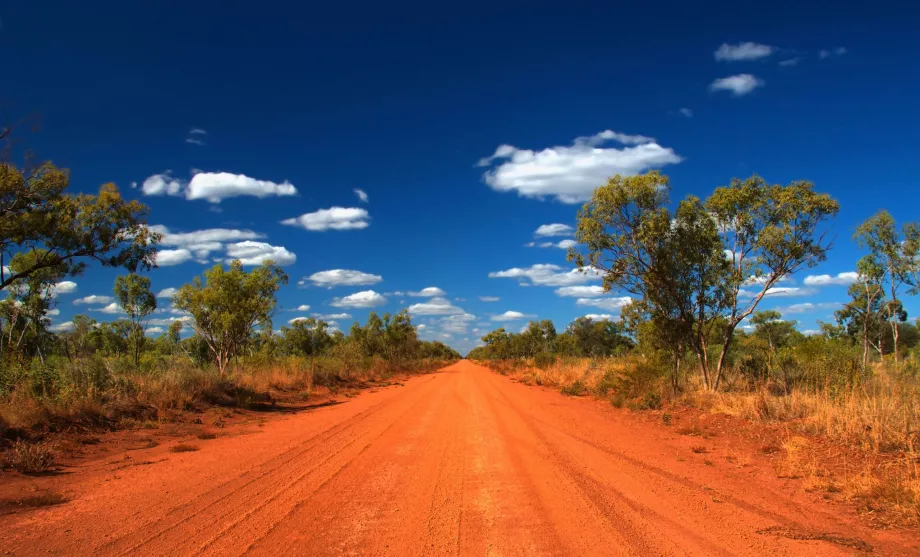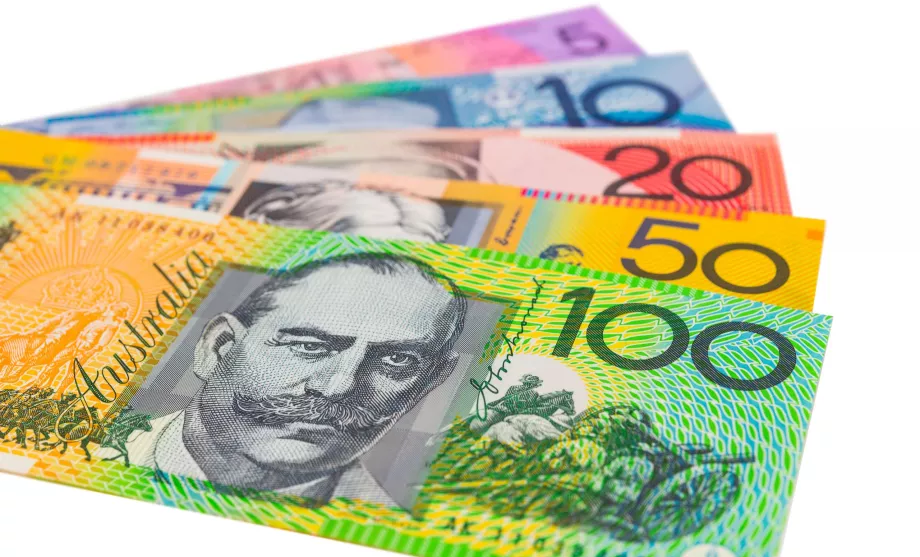Currency and prices in Australia

What currency do you pay with in Australia? How much do goods cost in a regular supermarket and how much in a restaurant?
Find out the prices of hotels in Australia
Australian dollar (AUD)
In Australia, you pay with the Australian dollar, which is also used as the official currency in Kiribati, Nauru and Tuvalu, among other countries.
The Australian dollar was introduced in 1966 when it replaced the Australian pound.
One dollar is divided into 100 cents.
Coins are worth 5 cents, 10 cents, 20 cents, 50 cents, $1 and $2.
Banknotes are used in denominations of $5, $10, $20, $50 and $100.
- International Currency Code: AUD (numeric code 036)
- Currency symbol: $ or A$
Can I pay in foreign currency in Australia?
No. The only official currency is the Australian dollar. Exceptionally, some hotels or tour operators may accept US dollars or euros.
Only the term "dollar" is used in normal communication; in Australia it is always the Australian dollar and not the US dollar.
Currency exchange and card payments
Where to exchange Australian dollars and how do ATMs work here?
Paying by card
You won't need cash for the duration of your stay in Australia.
Card payment is widespread everywhere, including rural areas, small cafes, food trucks, restaurants and at any landmarks.
Outside of the cities, however, it is always advisable to carry a physical payment card and not rely on your mobile phone or watch to pay. In many locations, only one operator has mobile signal coverage and paying by mobile might not work.
ATMs
ATMs in Australian banks normally work for all foreign credit cards and usually charge a fee for foreign card withdrawals between 1,50 aud and 2 aud.
You will come across ATMs in all major cities.
Beware of ATMs from services such as Travelex or Euronet, particularly those located at airports or tourist attractions, which may use a significantly unfavourable conversion rate.
Currency exchange offices
You can find money changers at all major international airports and you can also exchange money at any bank for a relatively high fee.
In general, however, it is always more convenient and, more importantly, considerably quicker to withdraw money from an ATM.
How much does what cost - how expensive is Australia?
Australia is one of the very expensive countries. In particular, food, restaurants and tourist services (organized tours, diving, surfing, etc.) are very expensive here.
Generally in Australia, the most expensive areas are the remote areas where everything has to be imported or touristy places like the area around the Great Barrier Reef or the Great Ocean Road.
On the other hand, the big cities are usually cheaper, especially Melbourne, Adelaide, Canberra or Perth. Of the cities, Sydney and Brisbane are the most expensive.
Price differences - high and low season
There are quite significant differences in the prices of tourist services (mainly accommodation and car rental) within the seasons.
Off-season prices can be as much as half the price! The weather in many parts of Australia, especially in the south and south-east, is also suitable for off-season travel.
See the chapter Weather in Australia for details.
How to save
If you know how, you can save quite a bit. For lunch, go to food courts, usually near offices or in shopping centres. These restaurants can be up to 50% cheaper than eating out in city centres.
Even if the prices in supermarkets are high, especially if you are travelling with several people and if you can cook in your accommodation, you will save significantly in this way.
Aldi is one of the cheapest supermarkets.
On the other hand, the highest prices are found in the small IGA minimarkets.
Examples of prices in Australia
How much does basic food, tourist attractions or transport cost in the UK? Check out this price guide.
Accommodation in a double room (prices per night)
- Cheap hotel with shared bathroom - from 100 aud
- Local 3* hotel - from 120 aud in low season or from 200 aud in high season
- International 4* hotel - from 220 aud
- Find accommodation prices in Australia
Accommodation prices can vary significantly by season.
Restaurant food
- Hot main meal in a regular restaurant - 25 aud to 35 aud
- Meals at a food stall - 15 aud to 20 aud
- Fast-food menus - 18 aud
- Espresso or Cappuccino - 6,50 aud
- Water 0.33 litres - 4 aud (however, free tap water is normally offered)
- Fanta/Coca Cola/Sprite 0,5 l - 6 aud
- Draft beer - 10 aud
Supermarket food
- Water 1.5l - 2 aud
- Packed baguette/sandwich - 7 aud
- Coca Cola (and other sodas) - 5 aud
- Milk 1l - 3 aud
- Apples - 5 aud / kg
- Bananas - 4,50 aud / kg
- Rice - 3,50 aud / kg
- Chicken - 15 aud / kg
- Canned fish - 6 aud
Shipping
- Public transport ticket - around 3,50 aud to 5 aud in cities; intercity transport is expensive and tickets for distances around 100 km cost around 25 aud
- Price of petrol 1 litre - 1,70 aud to 2 aud
- Car rental per day - from 60 aud depending on the season of the rental
- Compare car rental prices - Booking.com
Public transport, especially air travel, is cheaper when bought online with more time in advance (at least a month before the trip).
Alcohol and cigarettes
- A bottle of wine in a shop - 20 aud
- A can of local beer - 7 aud
- Cocktails in a bar - 10 aud (Happy Hours in the afternoon are common, when you get significant discounts)
- Pack of cigarettes - 50 aud
Prices are approximate and vary depending on the city and type of store.
Tipping and bargaining
In Australia, tipping is voluntary and not automatically expected. Locals usually only tip to the nearest $5 or $10.
In fact, most restaurants automatically add the tip to the bill, so no more is expected from customers.
The culture of haggling in Australia is not widespread at all, even in local produce markets.
Any questions left?
If you have any questions or comments about the article...


